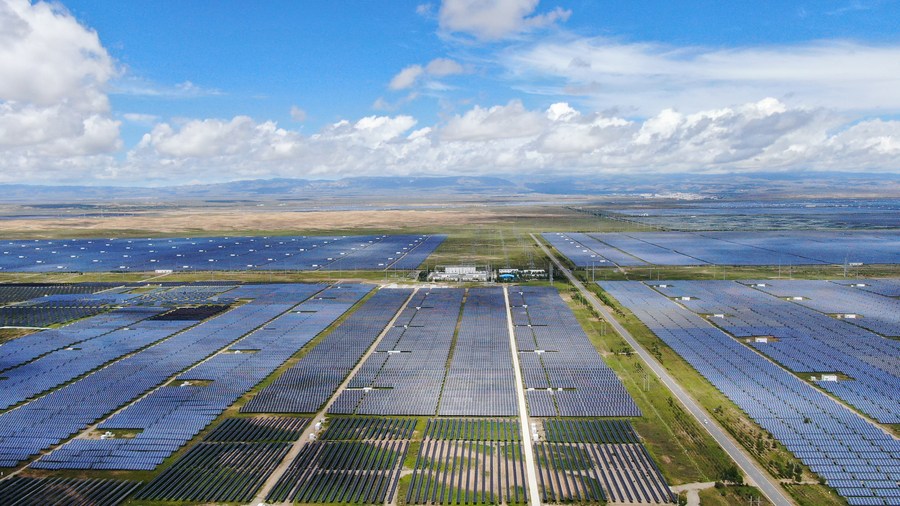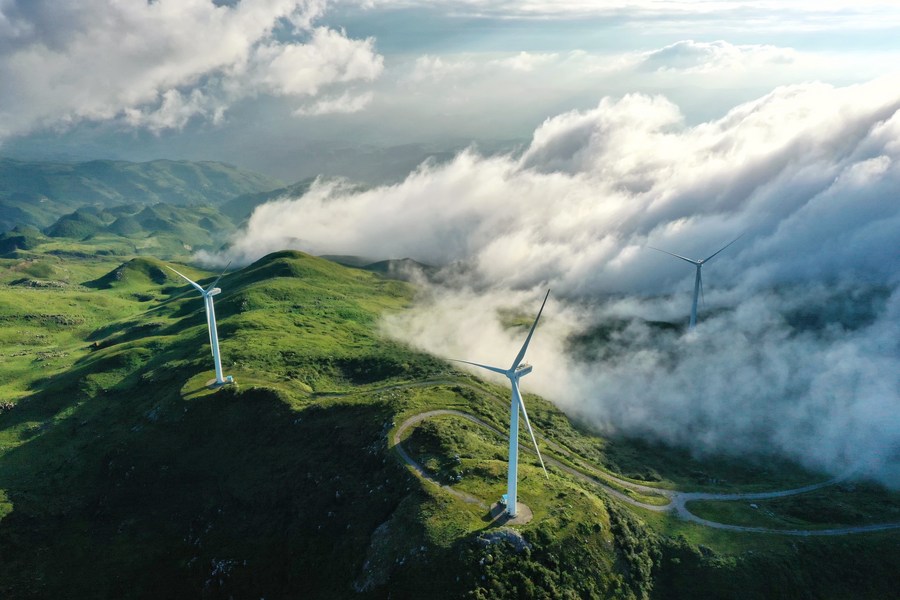Going carbon neutral, China embraces crucial years on emission control

Aerial photo taken on Aug. 17, 2020 shows a photovoltaic power station, also a poverty-relief project, at the green industrial development park in the Tibetan Autonomous Prefecture of Hainan, northwest China's Qinghai Province. (Xinhua/Zhang Long)
The 2021-2025 period will be crucial for China to control carbon emission as the country reiterates its carbon emission peak and carbon neutrality goals in its new development agenda, experts say.
Commenting on a high-profile meeting earlier this week, Chang Jiwen, a researcher on resources and environmental policies with the Development Research Center of the State Council, highlighted government calls to incorporate carbon-related goals into the country's long-term development.
To peak carbon emissions and achieve carbon neutrality is an extensive and profound systemic reform for the economy and society, and should be incorporated into the overall layout of building an ecological civilization, according to the meeting of the Central Committee for Financial and Economic Affairs.
China announced last year that it will strive to bring its carbon emissions to a peak before 2030 and become carbon-neutral before 2060. Therefore, less than 10 years away from its first goal, emission control efforts in the next five years have become especially crucial.
Toward this end, the meeting stressed work in the energy system, key industries, carbon sequestration and international cooperation, as well as technologies, lifestyle, policy support and market building related to green and low-carbon development.
"There is no shortcut to emission peak and carbon neutrality," said Pan Jiahua with the Chinese Academy of Social Sciences, who considered the measures proposed at the meeting as very precise.
Among all the actions to be taken, the top priority is to control the use of fossil fuels, according to Pan.
While China's economic rise over the past decades was largely powered by coal, the share of fossil fuels in China's energy mix still stands around 85 percent.

Aerial photo taken on Aug. 19, 2020 shows wind turbines in Jiucaiping scenic spot in southwest China's Guizhou Province. (Xinhua/Liu Xu)
The best scenario is that China will achieve zero growth in coal consumption during the 2021-2025 period, and see usage peak and start to decline by 2025, said He Jiankun, deputy director of China's national expert committee on climate change.
"By 2030, the newly increased energy demand for economic development will be basically met by newly added non-fossil energy, and the consumption of fossil energy will not increase on the whole," He told Xinhua earlier this year.
Pan called for increasing the use of renewable energy while building new power systems that mainly serve new energy.
There is great potential in the development of green industrial supply chains as well as green buildings in the next five years, according to Chang.
The campaign for green energy would also enable the public to embrace a more eco-friendly lifestyle, which is already shown by the country's booming sales of new energy vehicles.
Meanwhile, starting in February, China implemented a set of interim rules for the management of carbon-emissions trading designed to drive down the emissions of big power users.
Under the scheme, firms that exceed the emission caps can buy emission quotas from others with a lower carbon footprint. A total of 2,225 power firms are included in the project. More fields, such as the steel and aluminum production sectors, will be included in future carbon trading.
"Peaking carbon emissions and achieving carbon neutrality is a tough battle, and it is also a major test of the Party's capabilities in governing the country," the meeting has stressed.
Chang said carbon emission control is a long-term, arduous task, urging local governments to strengthen capabilities of green and low-carbon development.